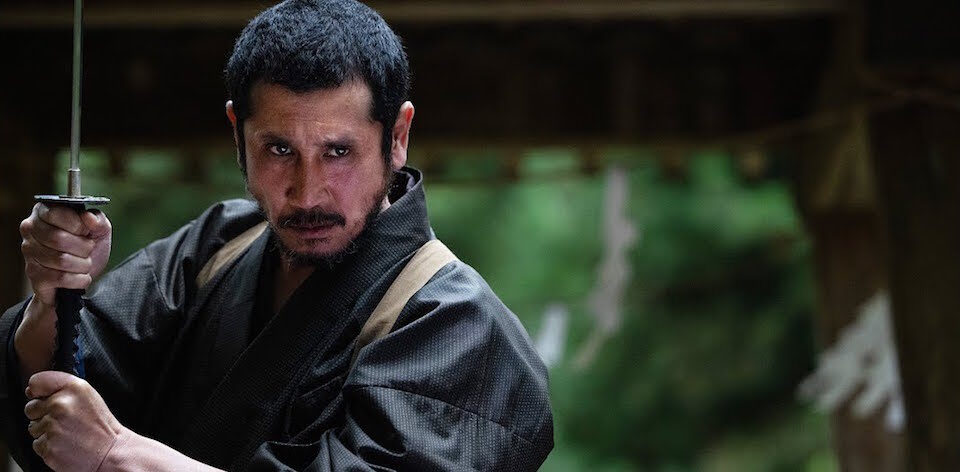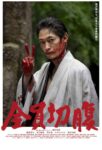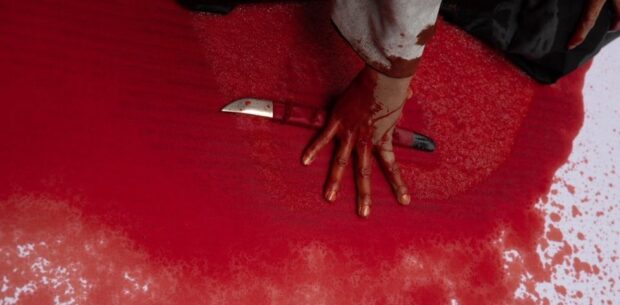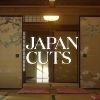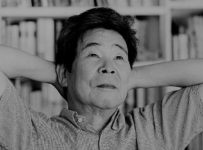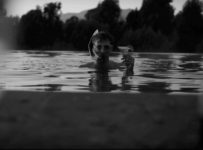At the entrance to a forest temple, woman in traditional Japanese garb begins a slow and steady march. The red of her outfit contrasts with the muted shade of her surroundings. She wears a black and gold hannya mask, the representation of a jealous female demon. As she slices her finger off, the titles drop to the pounding music of Mars 89. It must be a Toshiaki Toyoda film.
Although Toyoda has been a fixture of the Japanese film industry since the early 90s, his films of the last couple of years have taken on a renewed focus. With Wolf’s Calling (2019), he began his Resurrection Trilogy, a series of films surrounding the Mt Resurrection Wolf Shrine. With The Day of Destruction (2020), he continued his hybrid modern fable with a shout of rebellion into the void of an indifferent world.
The gloriously titled GO SEPPUKU YOURSELVES (全員切腹) brings the tale full circle. Taking place sometime in the early Meiji Era, an epidemic of illness has befallen the land. A man (Kiyohiko Shibukawa) has been tasked with aiding in the ritual suicide (seppuku) of a wandering samurai (Yosuke Kubozuka) who has been accused of poisoning the water.
Despite the period setting, there is no doubt that Toyoda is commenting on the here and now. Just like The Day of Destruction, the global pandemic lurks behind the Meiji facade. The demon that is assumed to have ‘poisoned the well’ could very much be an analogy for the intangible nature of a pandemic, even if the film treads a fine balance between literal and figurative causes.
Yet it’s also very much a missive against corruption in the powers that be. In the centrepiece scene, which takes up the last third of the film’s slender running time, the condemned samurai takes the opportunity to speak some harsh truths to that power. “The world is not worth living for,” he declares, echoing some of the sentiment expressed in The Day of Destruction. “You are the ones spreading the epidemic,” accuses the samurai. “Your lives will never be as good as mine.” It’s a mic drop moment before the inevitable final act, as well as an unblinking provocation.
As with all of Toyoda’s recent work, the short is just as much an exercise in sound and visual ferocity as anything else it might be. From the simple dichotomy of the white and black costumes of the protagonists, to the juxtaposition of humans and nature, it’s impossible to take your eyes off the screen.
Using the Mars 89 score in the same way he’s done with Seppuku Pistols and Kodō (Shiver), it’s also arguable that Toyoda’s use of music is the closest modern equivalent of Japan’s benshi performances that accompanied silent films. The final scene is vaguely reminiscent of Miike Takashi’s Hara-Kiri: Death of a Samurai (2011), in that it mixes an almost unbearable tension with the serene beauty of the surrounds.
What Toyoda achieves in 26 minutes is something some filmmakers struggle to convey in feature length films. Taken as a whole, the three films form a thematic whole that feels both fresh and immediate while harking back to a less complicated style of storytelling. So, when we look back at the sea of screenlife films that emerged from the pandemic era, Toyoda’s trilogy will no doubt stand out as the guttural cry from a world that’s been placed inside a cinematic time capsule.
2021 | Japan | DIRECTOR: Toshiaki Toyoda | WRITERS: Toshiaki Toyoda | CAST: Kiyohiko Shibukawa, Yosuke Kubozuka | DISTRIBUTOR: Toyoda Films, JAPAN CUTS 2021 | RUNNING TIME: 26 minutes | RELEASE DATE: 22 August – 2 September 2021 (JAPAN CUTS 2021)

